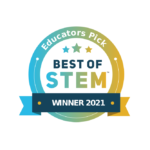How can chemical processes be used for heat transfer?
6-8 Middle School
Understanding the flow of thermal energy can be a difficult task for students, but it can be tackled through a design challenge. In this activity, students use the scenario of a habitat that must occasionally thaw its watering stations. After determining the heat released during the solvation of calcium chloride, students design, test, and improve a device to thaw and prevent freezing of watering stations. Designs are scored on how long the water remains liquid and the cost per device.
Teacher demonstration
Pour 500 mL of water in a 1,000 mL beaker and take the temperature of the water. Activate an instant ice pack, submerge it in the beaker of water, and take the temperature of the water 5 minutes later. Ask students how the temperature change can be explained.

How can chemical processes be used for heat transfer?
MS-PS1-6. Undertake a design project to construct, test, and modify a device that either releases or absorbs thermal energy by chemical processes.
Constructing Explanations and Designing Solutions
PS1.B: Structure and Properties of Matter
ETS1.B: Developing Possible Solutions
Energy and Matter
Phenomenon
Product Design
Wear gloves and safety goggles.
Gather supplies for the phenomenon and engineering challenge. Copy or upload student the activity guide.
Calcium chloride needs to be disposed of according to state and local regulations. Consult your chemical hygiene plan and SDS. Dispose of the cold pack according to package instructions.
Answers for temperatures will vary depending on the initial temperature of the water. Generally, 6.0 g of CaCl2 should produce half of the change in temperature when compared to the 12.0 g. An increase of about 20 to 21° C for the 12 g of CaCl2 is typical
Exothermic Reaction
Data Table

Present your final design with supporting evidence to the class. Use the engineering worksheet and project specifications for the basis of the presentation.
We are committed to providing the lab kits, instructional materials, and often free activities and supporting digital resources that do as much heavy lifting for you as we can.



*Next Generation Science Standards® is a registered trademark of Achieve. Neither Achieve nor the lead states and partners that developed the Next Generation Science Standards were involved in the production of this product, and do not endorse it.
Get the latest news, free activities, teacher tips, product info, and more delivered to your inbox.